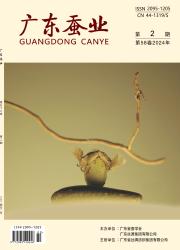从深圳到世界:1/4世纪的设计之路(2)
【作者】:网站采编
【关键词】:
【摘要】进入21 世纪的第三个十年,CCDI 回归到设计的本原,在文化性、先锋性和原创性方面进行了新一轮的探索,这依然得益于设计组织上的策略:公司有选择地
进入21 世纪的第三个十年,CCDI 回归到设计的本原,在文化性、先锋性和原创性方面进行了新一轮的探索,这依然得益于设计组织上的策略:公司有选择地形成多个富含创作激情的建筑工作室,为它们在财务和运营指标上配置了一系列扶植措施,并以此吸引力一批新鲜的设计力量,力求对当代城市建筑问题的进行更深层次的思考:其一,如何将建筑与景观在特定的场所条件下生长出更有生命力的互动形态;其二:如何在高密度的都市环境中实现复合式的公共空间设计。近年来CCDI 的多个设计实例均对这两个问题给出了具体而富有新意的探索。
2012年起,CCDI 以全新的品牌形象开始了新的旅程,并进行了一系列国际化的收并购举措。2013年,CCDI 收购百年历史的澳大利亚PTW 事务所,开始走出国门,在非洲和中东获得设计业务订单。与此同时,CCDI 在美国本土开设全新的设计品牌ArchilierArchitects,致力于高密度综合体、酒店、高端住宅的设计;在商业设计业务之外,CCDI 也通过投资和品牌建设行为,扶持Link-Arc 这类先锋派的新锐设计机构,在文化建筑和社会公益层面做出进一步的探索。
回顾25年以来CCDI 的发展历程,我们可以看到一系列有组织的战略布局,它们为大型机构的设计品质提升提供了保障和方向,也证实了即使在十分依赖个体智慧的工程设计咨询类企业,也可以实现超大规模的企业化战略,由此带来社会主流建筑水准的大幅提升。在这个过程中,以建筑学为核心的原创设计能力、以工程学科为主线的技术实施能力、以及面向全过程服务的项目管理能力,它们彼此的组合延展,构成了CCDI 最有竞争力的资源格局。在步入二十一世纪的第三个十年,CCDI 的集团战略显得更为清晰:通过产品化管理、一体化经营、实现生产协同和多区域扩张,以满足中国城市化对工程设计服务行业持续而复合的需求。尽管未来在很多方面难以预测,我们对改变和提升人类城市环境的品质,依然充满着无尽的信念。
CCDI 集团总部所在地,上海湾谷科技园
上海总部前台区域
We can trace back many events and memories about CCDI to a famous Olympic building. About 10 years ago, together with the Australian PTW office, CCDI stood out in a design competition featuring participants from many international architectural practices. With a unique oriental Buddhist mood and daring material adoption, CCDI won the National Aquatics Center design task—the Water Cube,which was one of two major venues for the 2008 Olympic Games in on elaborate design and mass application of complex construction technology, the Water Cube became the only architectural instance that was awarded as first prize during National Science and Technology Progress Competition. It subsequently won global recognition as a swimming pool with the highest number of world record-breaking races in Olympic history.
Today, the blue Water-Cube lies quietly on one side of the Olympic Park. After the enthusiasm and excitement of the Beijing Olympic Games, it continues to serve as a public venue for water sports, open to citizens and travelers and it is also one of the most innovative new symbols for Beijing. Just from this building, CCDI, as a distinctive design organization, began to win global architectural attention. Architects and engineers from CCDI continue to launch masterpieces in large-scale public buildings after creating this beautiful bubble box.
Since the Olympic Games, CCDI has extended their advantage in sports architectural design at a world level. Architects from CCDI’s sports unit have produced more than 100 stadiums and fitness facilities in Chinese cities alone. They have developed a design philosophy based on organic form, and are leading the aesthetic trend in this field by bringing cultural metaphors to life from a technological perspective. For example, built in 2009, the Jinan Olympic Sports Center uses the lotus and willow as design prototype, which endows the super large-scale building with a light bionic form.The recently designed Hangzhou Sports Center, which is estimated to complete in 2014, separates the petal shape surface into related but different elements and looks softer, achieving the silky weaving texture, like a huge flower beside Qiantang River.
Following CCDI’s development history, the accumulation of technology always benefits from sound cooperation. As a result, CCDI has become one of the most popular partners among international architects. The Shenzhen Vanke Center, jointly designed by CCDI and Steven Holl Architects and completed in 2010, is China’s first LEED platinum certification building—a certification that is rarely achieved by domestic buildings. Besides the adoption of massive green technology, the most important design concept of this building can be restored into an open location relationship, which has been understood perfectly by CCDI engineers and achieved by oblique cable structure and MEP technologies. The Shenzhen Ping-An Tower,jointly designed by CCDI and KPF; the Qatar Central Library with cooperation with OMA; and the Doha Foreign Affairs Ministry Building with cooperation with Jean Nouvel, have became the classic examples of Sino-foreign this process, CCDI has not only acquired technological ability and the continuous improvement in production quality, but has also undertaken more social responsibility unconsciously so that more and more Chinese architects are able to grow in an environment of mutual trust and cooperation.
文章来源:《广东蚕业》 网址: http://www.gdcyzz.cn/qikandaodu/2021/0208/570.html
上一篇:弥异所081:广州超级文和友
下一篇:深圳壹方中心

